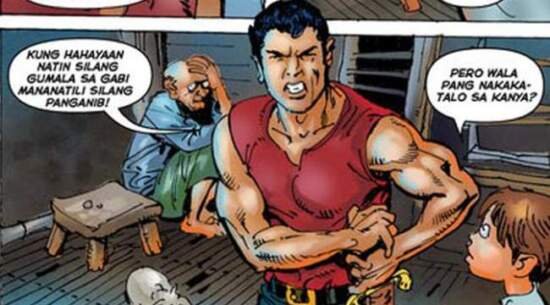One assumes that DC Comics have revitalised the concept of the obscure 1980s team of aliens, first appearing in 1981 as The Omega Men, because of the success of Marvel Entertainment’s film featuring an equally obscure group of aliens, Guardians of the Galaxy.
When the concept was first published as its own title in 1983, in the days of letters pages, a reader wrote and asked why the team’s leader was called “Primus”, when alien team leaders were unlikely to have names alluding to their “primacy” by use of a word with a Graeco-Latin root, and more ludicrously, why a tiger-esque alien was called “Tigorr”.
The editor responded by noting in words to the effect that an unintelligible character names would render the characters inaccessible to readers.
Thirty years later, Tom King as writer and Barnaby Bagenda as artist have done their level best to render equally inaccessible this new incarnation of The Omega Men.
Mr King has done this mostly by filling the issue with unintelligible alien words (in text vaguely resembling Japanese katakana) at a ratio of approximately one alien word to every five English words.
One of the pages, solidly filled with dialogue amongst the main antagonist and his lieutenants, should have been important to set the scene for the objective of the Omega Men’s enemies.
Instead it consists almost entirely of alien text, except for the word “viceroy” ten times, the word “Tigorr” four times, the word “Omega” once, the words “Omega Men” once, and the sentence, “The end is here.” It makes for utterly frustrating reading.
Of those English words occurring throughout the issue, the sentences “We will not hurt you” and “We are friends” are repeated as an intentional mantra throughout the issue seven times each, and the word “alpha” (as an apparent substitute for “God”) is repeated no less than twenty-five times.
The legible dialogue is otherwise scant and uninspiring. It is lazy writing.
The characters are not especially different from those seen in the original series. Tigorr is established as the team’s clawed antihero with enhanced senses, brutally murdering a cohort of soldiers, justifying his actions with grim philosophy, and challenging those team-mates who would call him an “animal”. This will all sound tiredly familiar to readers family with Marvel Comics’ Wolverine.
The universe is vast and any life form which could have evolved without the benefit of sentinel gas giants to absorb the punishment of comets and meteors, and a spinning iron core to generate a radiation-repelling magnetic shield, could be very different from humans or indeed humanoid tigers. DC had the opportunity to start with a clean slate. The publisher could have made this a very different book, more akin to the strangeness of EE “Doc” Smith’s Lensmen series, or the repellant danger of Ridley Scott’s Alien movies.
Instead, it dusted off a title which suffered a prolonged uncertainty of concept in the mid-80s and ultimately failed in 1986, and executed that revival in the worst possible way.
Blame for this lacklustre effort at writing must surely be shared by the editors, Andy Khouri and Brian Cunningham. Good editors would have reined in this reliance upon the art, and the vague caper plot of, apparently but not obviously, rescuing White Lantern Kyle Rayner, carrying the comic. Good editors would have insisted upon solid dialogue. The lack of editorial guidance suggests bleak inexperience.
It is a series which, unless something startling occurs in the next issue or so, is doomed to cancellation.



